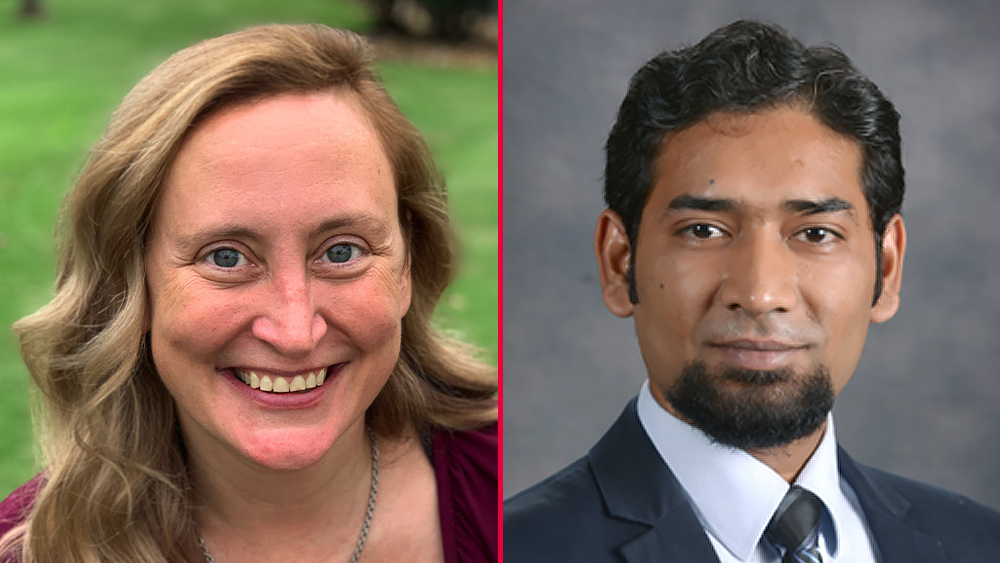
Texas A&M University College of Engineering faculty Dr. Tracy Hammond and Dr. Vinayak Krishnamurthy are part of an investigative research team that recently received a $1.5 million collaborative research grant from the National Science Foundation’s (NSF) Division of Undergraduate Education to improve undergraduate students’ ability to draw representations of structures and systems.
Sketchtivity, an intelligent tutoring system that teaches engineering students how to draw these representations, will be used in this project to examine the impact of drawing instruction on student learning.
"Many engineering schools now recognize how important it is for every single one of their students to know how to sketch 3D objects quickly and accurately to support design generation and communication, however few engineering schools have the capabilities to teach these vital skills,” said Hammond, director of the Institute for Engineering Education and Innovation and professor in the Department of Computer Science and Engineering. "Sketchtivity provides instant personalized feedback on students' drawing skills just as if they had an expert art teacher looking over their shoulder. With these new skills, we will create more confident, creative and capable engineers with effective visual communication skills.’"
The project’s investigative team also includes Dr. Julie Linsey, associate professor in the Department of Mechanical Engineering at Georgia Tech; Wayne Li, professor of practice in design and engineering at Georgia Tech; Dr. Kerrie Douglas, assistant professor in the Department of Engineering Education at Purdue University; and Dr. Vimal Vishwanathan, associate professor in the Department of Mechanical Engineering at San Jose University.
The grant, titled "Collaborative Research: Fostering Engineering Creativity and Communication Through Immediate, Personalized Feedback on 2D-Perspective Drawing," will be shared by the four respective universities.
During the transition from hand drafting to computer-aided-design, free-hand drawing and its associated benefits were unintentionally removed from the engineering curricula. This eventually resulted in a lack of proficiency by students and faculty when it came to free-hand drawing. Sketchtivity provides real-time feedback on 2D drawings made on a screen instead of paper. This application, developed by the research team, helps students with iterative, personalized feedback on the drawing and facilitates their overall learning experience. This project will support reestablishing 2D-perspective drawing in the engineering curricula to meet the practical needs of students once they enter the workforce. This research is expected to have extensive significance in undergraduate STEM education.
"By enabling students to sketch better, we are already beginning to see higher engagement and exploratory behavior in students," said Krishnamurthy, assistant professor in the J. Mike Walker '66 Department of Mechanical Engineering.
Through this project, around 5,000 diverse undergraduate and graduate students at the four partnering institutions would receive the Sketchtivity software. This would include a large percentage of women engineers and other students who are underrepresented in the STEM field. The project aims to bring crucial knowledge about drawing-based artificial intelligence (AI) tools and increase cognizance of the effects that feedback and reflective prompts have on drawing skills, learning and creativity. Assessments made by humans will be compared to AI-based assessments to provide supplementary information about the development of intelligent tutoring systems. The project will investigate the students’ drawing ability, how it is impacted by their creativity and spatial reasoning skills, and whether it is transferable to other engineering courses.
In order to determine the project outcome, a mixed-methods approach that uses surveys, validated assessments for engineering design creativity and drawing quizzes will be implemented.
The NSF’s Improving Undergraduate STEM Education: Education and Human Resources program seeks to improve the effectiveness of STEM education for all students through research and development projects. The program supports the creation, exploration and implementation of promising practices and tools through the engaged student learning track.